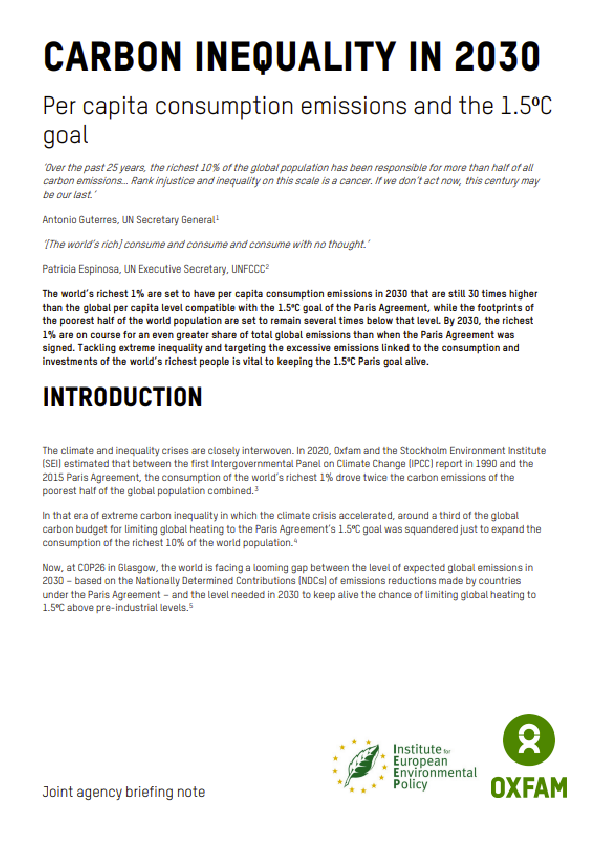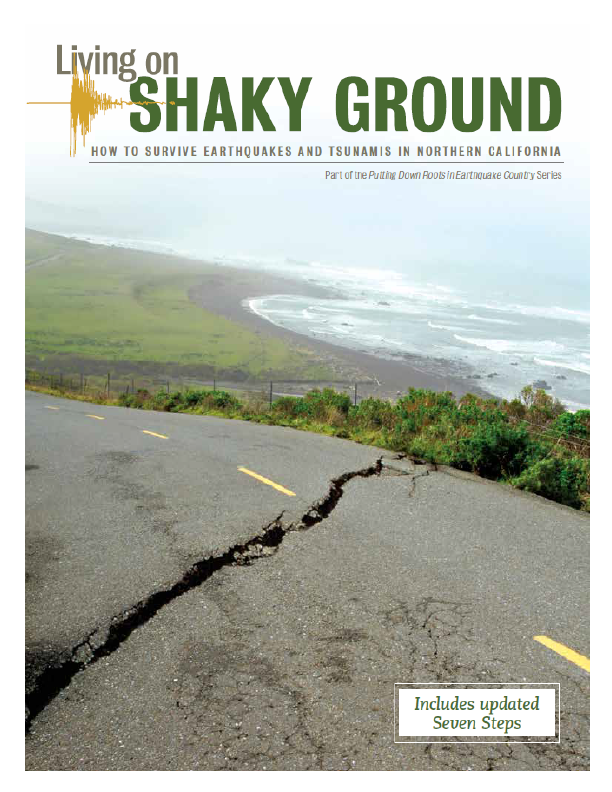Greenhouse gas emissions from human activities strengthen the greenhouse effect, causing climate change. Most is carbon dioxide from burning fossil fuels: coal, oil, and natural gas. The largest emitters include coal in China and large oil and gas companies, many state-owned by OPEC and Russia. Human-caused emissions have increased atmospheric carbon dioxide by about 50% over pre-industrial levels. The world’s richest 1% are set to have per capita consumption emissions in 2030 that are still 30 times higher than the global per capita level compatible with the 1.5⁰C goal of the Paris Agreement, while the footprints of the poorest half of the world population are set to remain several times below that level. By 2030, the richest 1% are on course for an even greater share of total global emissions than when the Paris Agreement was signed. Tackling extreme inequality and targeting the excessive emissions linked to the consumption and investments of the world’s richest people is vital to keeping the 1.5⁰C Paris goal alive.
INTRODUCTION
The climate and inequality crises are closely interwoven. In 2020, Oxfam and the Stockholm Environment Institute (SEI) estimated that between the first Intergovernmental Panel on Climate Change (IPCC) report in 1990 and the 2015 Paris Agreement, the consumption of the world’s richest 1% drove twice the carbon emissions of the poorest half of the global population combined.
In that era of extreme carbon inequality in which the climate crisis accelerated, around a third of the global carbon budget for limiting global heating to the Paris Agreement’s 1.5⁰C goal was squandered just to expand the consumption of the richest 10% of the world population.
Now, at COP26 in Glasgow, the world is facing a looming gap between the level of expected global emissions in 2030 – based on the Nationally Determined Contributions (NDCs) of emissions reductions made by countries under the Paris Agreement – and the level needed in 2030 to keep alive the chance of limiting global heating to 1.5⁰C above pre-industrial levels.
In this new briefing commissioned by Oxfam based on analysis by the Institute for European Environmental Policy (IEEP) and SEI, we provide estimates of the impact of the NDCs on the per capita consumption emissions of different global income groups in 2030 – revealing the stark inequality between the people whose carbon footprints are set to be compatible with the 1.5⁰C Paris goal, and those whose are not. We estimate that:
• People in the richest 1% of the global population are set to have per capita consumption emissions footprints in 2030 that are still 25% higher than in 1990, 16 times higher than the global average, and 30 times higher than the global per capita level compatible with the 1.5⁰C goal, while the footprints of the poorest half of the global population are set to remain well below the 1.5⁰C-compatible level.
• The share of total global emissions associated with the consumption of the richest 1% is set to continue to grow, from 13% in 1990 to 15% in 2015 and 16% in 2030.
• In 2015–30, the global ‘middle classes’8 are on course for per capita emissions cuts that are closest to (though still far from) the global 1.5⁰C-compatible per capita level – which, given this global income group saw the fastest emissions growth rates in 1990–2015, is a sign of the so-called ‘Paris effect’9 in transforming the course of emissions trends.
• The geography of global carbon inequality is set to change, with an increasing share of the emissions of the world’s richest 1% linked to citizens in middle-income countries.
• At the national level in each of the major emitting countries, the richest 10% of citizens are set to have per capita emissions in 2030 that are substantially higher than the global average per capita level compatible with the 1.5⁰C goal.
Carbon inequality is extreme, both globally and within most countries. If the 1.5⁰C goal is to be kept alive, then carbon emissions must be cut far faster than currently proposed. But critically, these efforts must go hand-in-hand with measures to cut pervasive inequality and ensure that the world’s richest citizens – wherever they live – lead the way. Four of our key findings are further explored below.











